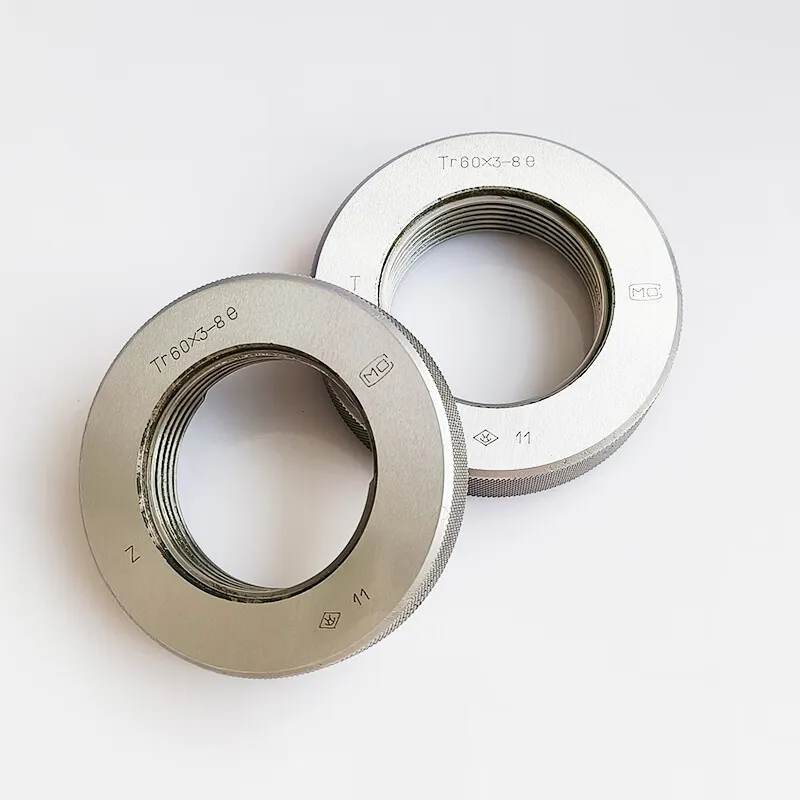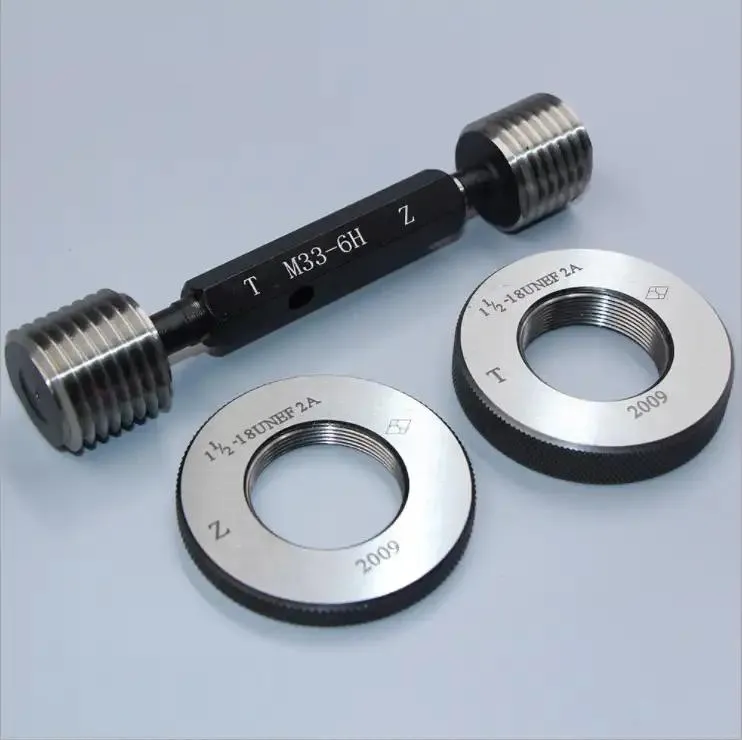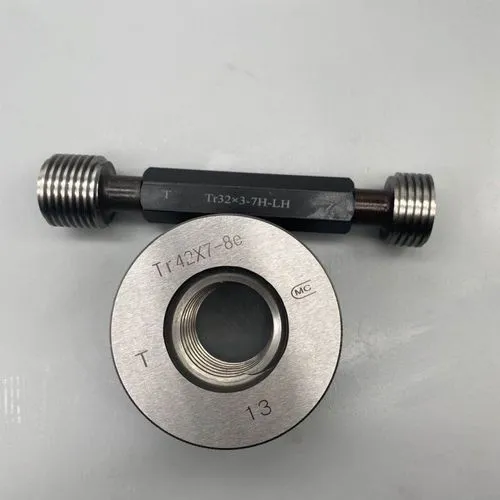حوزەیران . 25, 2025 09:20 Vegere navnîşê
Future Innovations in Self-Locking Trapezoidal Threads Technology
The evolution of mechanical engineering continues to redefine industrial standards, and one area witnessing transformative advancements is self-locking trapezoidal thread technology. As a leading manufacturer specializing in high-volume production of threaded components, we are at the forefront of integrating cutting-edge innovations into mijarên trapezoidal, metric trapezoidal thread systems, and trapezoidal thread screw designs. This article explores the future trajectory of these technologies, emphasizing their role in enhancing performance, durability, and efficiency across industries.

Advancements in Trapezoidal Threads for Load-Bearing Systems
Trapezoidal threads have long been celebrated for their ability to handle heavy axial loads while minimizing friction. Recent innovations focus on optimizing thread geometry to improve load distribution and reduce wear. By leveraging computational modeling and advanced material science, manufacturers can now design mijarên trapezoidal with asymmetric flank angles tailored to specific applications. For instance, threads engineered for hydraulic presses prioritize shock absorption, while those used in CNC machinery emphasize precision under cyclic stress.
A breakthrough in self-locking mechanisms involves embedding micro-textured patterns into the thread flanks. These patterns, created via laser etching or additive manufacturing, enhance grip without compromising the thread’s structural integrity. When paired with high-strength alloys, such as titanium-reinforced steel, these threads achieve unprecedented resistance to back-driving—a critical feature for applications like industrial lifts and aerospace actuators.
Furthermore, the integration of IoT-enabled sensors into trapezoidal thread screw assemblies allows real-time monitoring of torque and axial force. This data-driven approach enables predictive maintenance, reducing downtime and extending component lifespan in high-stakes environments like offshore drilling rigs and wind turbines.
Precision Manufacturing of Metric Trapezoidal Thread Standards
The global shift toward metric standardization has elevated the importance of metric trapezoidal thread systems. These threads, defined by ISO 2901-2904 standards, are indispensable in cross-border industrial projects requiring seamless compatibility. Innovations in manufacturing techniques, such as multi-axis CNC grinding and thread rolling, ensure tighter tolerances and smoother surface finishes for metric trapezoidal thread profiles.
One emerging trend is the use of hybrid manufacturing processes. For example, combining cold-forming with post-process heat treatment enhances the hardness and fatigue resistance of metric trapezoidal thread screws. This is particularly beneficial for automotive steering systems and robotics, where threads must withstand millions of cyclic movements without deformation.
Additionally, advancements in coating technologies—such as diamond-like carbon (DLC) and ceramic nanocomposites—are being applied to metric trapezoidal thread surfaces. These coatings reduce friction coefficients by up to 40%, enabling smoother motion transmission and lowering energy consumption in conveyor systems and assembly line machinery.

Expanding Applications of Trapezoidal Thread Screws in Automation
The versatility of trapezoidal thread screws is being amplified by their adoption in automated and robotic systems. Modern automation demands components that combine high load capacity with compact dimensions. By refining the pitch and lead angles of trapezoidal thread screws, engineers can achieve finer linear resolution, making them ideal for precision positioning in 3D printing and semiconductor manufacturing equipment.
Self-locking variants of trapezoidal thread screws are also gaining traction in vertical lift systems. For example, in warehouse automation, these screws provide fail-safe braking without external mechanisms, ensuring safety during sudden power outages. Innovations like dual-start threads further enhance speed-to-load ratios, enabling faster operation in packaging machinery and medical devices.
Material innovation plays a pivotal role here. Lightweight carbon fiber-reinforced polymers (CFRP) are being used to fabricate trapezoidal thread screws for aerospace applications, reducing weight while maintaining tensile strength. Similarly, corrosion-resistant superalloys are extending the service life of screws used in marine and chemical processing equipment.

FAQs ji dor Trapezoidal Threads Technology
What distinguishes trapezoidal threads from other thread forms?
Trapezoidal threads feature a 30-degree flank angle, which optimizes load distribution and reduces shear stress compared to V-threads. This design is ideal for applications requiring bidirectional motion control under heavy axial loads, such as lead screws in industrial machinery.
How do metric trapezoidal thread standards ensure global compatibility?
ISO-standardized metric trapezoidal thread dimensions (e.g., Tr8x1.5) guarantee interchangeability across international markets. This uniformity simplifies sourcing and maintenance for multinational projects, from European automotive plants to Asian infrastructure projects.
Can trapezoidal thread screws be customized for high-temperature environments?
Yes. By using heat-treated alloys like Inconel or employing ceramic coatings, trapezoidal thread screws can operate reliably in environments exceeding 800°C, such as furnace controls and jet engine components.
What maintenance practices prolong the life of trapezoidal threads assemblies?
Regular lubrication with high-viscosity grease and periodic inspection for wear debris are essential. For self-locking threads, avoid over-tightening to preserve the micro-textured locking features.
Are metric trapezoidal thread systems compatible with legacy equipment?
Absolutely. Adapters and transition nuts are available to bridge ISO-standard metric trapezoidal threads with older imperial systems, minimizing retrofit costs for factories upgrading machinery.
The future of self-locking trapezoidal thread technology lies in the synergy of material science, precision engineering, and smart manufacturing. As industries demand higher efficiency and reliability, innovations in mijarên trapezoidal, metric trapezoidal thread standardization, and trapezoidal thread screw applications will continue to redefine mechanical systems. By staying ahead of these trends, we remain committed to delivering robust, scalable solutions that meet the evolving needs of global industries.
-
Why Metric Trapezoidal Thread is Ideal for Precision Motion ControlNûçeAug.05,2025
-
The Unique Properties of a Block of Granite for Industrial UseNûçeAug.05,2025
-
The Role of Flanged Y Strainers in Preventing Pipeline ClogsNûçeAug.05,2025
-
The Importance of Regular Calibration for Master Ring GagesNûçeAug.05,2025
-
How a Cast Iron Surface Table Enhances Accuracy in ManufacturingNûçeAug.05,2025
-
Comparing Different Check Valve Types for Optimal Flow ControlNûçeAug.05,2025
Berhemên Têkildar









